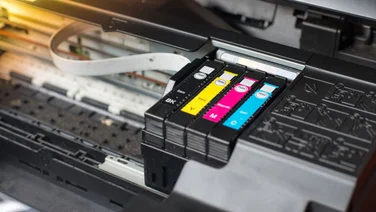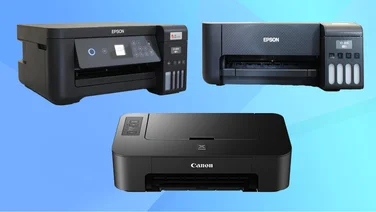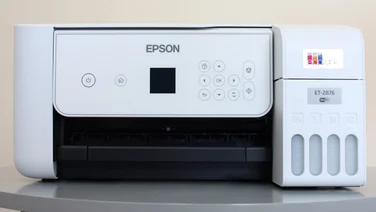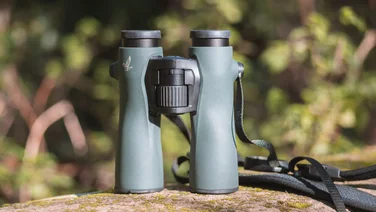To help us provide you with free impartial advice, we may earn a commission if you buy through links on our site. Learn more












There’s some fierce competition for the accolade of best compact system camera (CSC). The basic concept is a strong one, combining SLR quality with compact proportions and topping it off with the best videos modes around. However, no camera we’ve seen to date gets everything right. The Sony NEX-5N comes closest with its class-leading image quality, but it’s relatively slow to focus, it’s quite pricey and its kit lens is bulkier and not as sharp as rival lenses. The Panasonic Lumix DMC-GF3 is seriously quick, costs less and there are lots of superb Micro Four Thirds lenses, but image quality in low light is disappointing. Then there’s the Nikon 1 J1, which is quick and keenly priced, but can’t match Panasonic for lens range or Sony for image quality.

Can the Olympus E-PL3 deliver a clean sweep? On paper, the evidence is all positive. It uses the same Micro Four Thirds mount as Panasonic, and so shares the same range of excellent lenses. Its 3x zoom kit lens collapses down when not in use for easier transit, and even the lens cap is unusually slim. Olympus also claims significant improvements to image quality and performance in this third generation of Pen cameras – more on that later.
The flash is a small removable unit in the same vein as the Sony NEX cameras, but we’re delighted to see that the E-PL3 also accepts conventional flashguns on its accessory shoe – something all the other cameras mentioned above lack. The shoe can alternatively accommodate an electronic viewfinder, external microphone input adaptor, a pair of LED macro lamps on gooseneck-style bendy arms or even a Bluetooth adaptor for sending photos to say a smartphone. In fact, when it comes to accessories, including some trendy-looking bags, Olympus is way ahead of the competition.

Back to camera itself, the LCD screen is a similar design to that on the NEX-5N. Measuring 3in across, it’s widescreen and can tilt up or down for easy waist height or overhead shots. It’s not touch-sensitive, though, and it couldn’t match the 5N’s screen for details or contrast, either, and moving images looked a little smeared. It’s slightly raised from the back of the camera, and its proximity to the controls there sometimes made them awkward to adjust.
The E-PL3 has a few more buttons than its peers, though, including a customisable Fn button and another for digitally magnifying the live view image. It also includes a mode dial. There’s a trend among CSCs to strip out physical controls in a bid for point-and-shoot simplicity, but a mode dial is one feature that’s always worth having, whether it’s to switch from Program to Aperture Priority mode or from Auto to a scene preset.

We were initially mystified by the sparse menus, but an option in the Setup menu page unlocks a Custom page with masses of options for everything from the Auto ISO mode’s upper and lower limits to the orientation of the focus ring and wheel on the back of the camera. We disliked how this wheel didn’t have a default role – such as exposure compensation or aperture – while shooting, but this option is there too, with the ability to define it separately for P/A/S/M modes. Some features are cryptically named but we can’t fault the E-PL3 for the breadth and depth of options.
Performance was a weak area for previous Pen cameras but the E-PL3 is a massive improvement. It switched on and captured a photo in 0.9 seconds, and subsequent photos were just 0.6 seconds apart. Autofocus was extremely quick, and although we didn’t have the Panasonic GF3 or Nikon J1 to hand to make direct comparisons, it routinely outpaced the Sony NEX-5N for autofocus. It occasionally floundered in very low light but these occasions were rare enough so as not to be a significant issue. Continuous shooting was at 4.3fps in our tests, slowing to a still-respectable 2.2fps after nine frames. An alternative mode captured at up to 1.7fps with continuous autofocus, although it slowed further when moving subjects demanded updated focus.
Olympus is the only CSC manufacturer to incorporate image stabilisation into the sensor, which means it works with any lens. However, the E-PL3’s stabilisation isn’t the most effective we’ve encountered. Quite a few of our test shots on automatic settings were slightly blurred. It didn’t do well in controlled tests compared to the NEX-5N, either. For example, the 5N kept 85 per cent of shots sharp when shooting 1/8-second exposures at the full zoom extension, but the E-PL3 only managed 30 per cent at the same settings. Tests at other shutter speeds told a similar story.

Video recording is at 1080/30p in AVCHD format, with clip lengths up to 30 minutes. The automatic exposure reacted quickly to changing light, while the ability to apply exposure lock and to shoot in priority or full manual modes provides complete control for those who need it. However, unlike the NEX-5N and Nikon J1, manual exposure settings can’t be adjusted while recording. The ISO control is limited to 400 to 1600 for videos, and video picture quality at ISO 1600 wasn’t as sharp nor as smooth as from the NEX-5N. Autofocus was extremely responsive but the kit lens made purr-like clicks that were picked up by the microphone.
Our test photos were bursting with detail, although this was partly down to heavily boosted contrast and digital sharpening. This was after we’d selected a picture mode named Natural, so it wasn’t really what we’d hoped for. There are various other picture modes available and it’s easy enough to customise them, but we recommend spending some time experimenting with settings and evaluating the results on a PC rather than relying on the default mode.

Otherwise, image quality was excellent, with sharp focus and impressively low noise – lower than from the GF3 and J1, although not quite up to the NEX-5N’s standards. Noise reduction was relatively mild, and while this resulted in grainy shadows at fast ISO speeds, it also retained plenty of detail.

The E-PL3 ticks all the boxes – fast performance, high image quality, compact design. However, it’s not the easiest camera to love. The screen’s smeared, slightly washed-out colours and the fact that it gets in the way of the controls mean using this camera isn’t the pleasurable experience we’d hope for at this price. Meanwhile, clicks in video soundtracks and the relatively unreliable stabilisation are significant drawbacks to its otherwise impressive photo and video quality. The Sony NEX-5N isn’t perfect but it’s a delight to use and its photos and videos look (and sound) gorgeous, so it’s well worth spending a little extra on.
However, don’t write off the E-PL3 quite yet. With lots of high-quality lenses available, the ability to take full-sized flash guns plus an enviable range of attachments and accessories, the E-PL3 is still a great CSC to buy if you plan on extending its capabilities beyond the included kit zoom.





